Modern processors keep getting hotter, and it seems like CPU coolers just keep getting bigger to accommodate them. There are some truly monstrous modern CPU coolers — especially passive models designed to operate without any fans at all. It makes you wonder what is the biggest CPU cooler ever made? Is it one of these latest modern monstrosities? Or has a cooler from the past beat them to the punch?
I did a little deep dive into CPU cooler history to find some truly massive coolers — and one that reigns supreme to this day.
SilentMaxx Titan
The largest CPU cooler ever: 9.6 x 6.7 x 5.1-inches
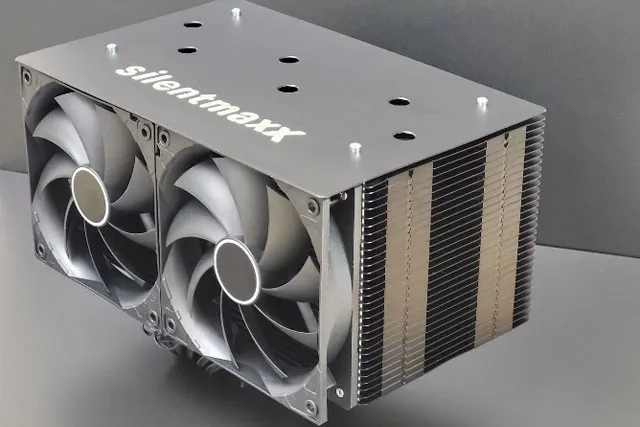
In terms of sheer size and weight, the SilentMaxx Titan holds a definitive lead. It is an absolute mammoth of a cooler. Measuring almost 10 inches along, and close to7 inches wide, there’s no other cooler out there with the sheer volume of this thing. It weighs an unprecedented 2 kilograms, which is just under 4.5 pounds.
It’s designed to operate as a passive cooler, with the ability to handle up to 145 watts. Strap on a pair of high-performance fans, though, and it’ll cool just about anything and do so quietly, too.
Unfortunately, you can’t buy this cooler by itself, but it is available as part of SilentMaxx’s custom-built quiet PCs.
ProlimaTech Genesis
The broadest CPU cooler: 5.7 x 8.5 x 6.3-inches
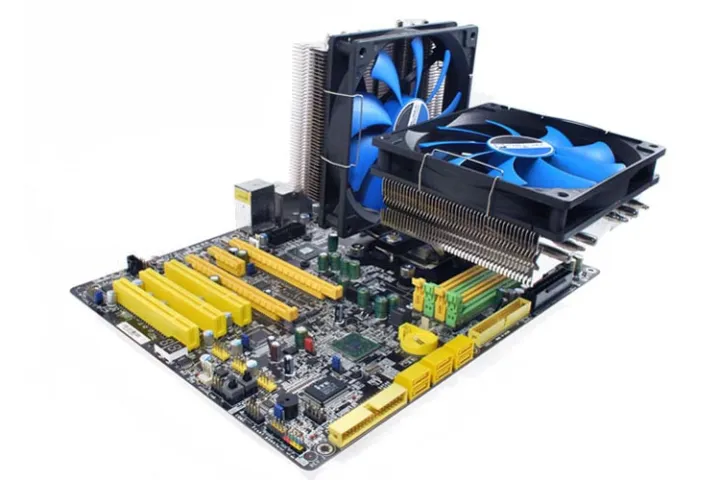
Only falling short of the very top spot by an inch or two, the ProlimaTech Genesis’ dimensions are some of largest among its gigantic air cooler companions. If you cube it’s volume, it’s simply huge. It takes up an enormous amount of internal space in a PC case, giving it the silver medal on our coveted list of the largest of CPU coolers.
Released in 2011 with support for the then-latest AMD and Intel processors on Socket 2011/FM2, as well as many generations of older processors, the ProlimaTech Genesis is a huge cooler with a unique design. It’s like a dual tower cooler, but with one of the heat sinks oriented horizontally. This allowed buyers to use a fan to blow down onto their RAM and other components for added system cooling, while a second heat sink on the rear could be configured with up to two fans in a push-pull configuration. Due to their placement, the idea was to exhaust that air straight out the back of the case.
Unfortunately, its size couldn’t quite live up to the hype. As Bit-Tech reported at the time, while it was reasonably effective, the downsides to the distinct configuration didn’t outweigh the positives.
NoFan CR-95C
Another unique design: 7 x 7 x 5.8-inches
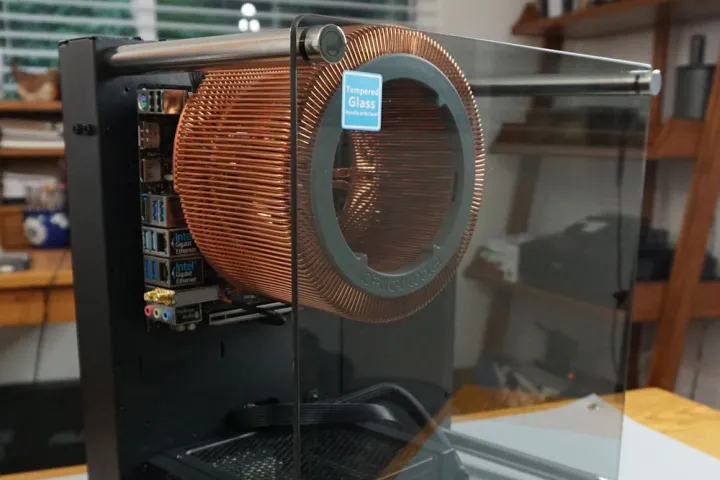
Another classic from the archives of CPU cooling history, the NoFan CR-95C is a cylindrical passive copper cooler that was released in 2011 and reviewed rather well at the time. Hexus gave it a solid thumbs-up for its impressive cooling performance and completely silent operation, while critiquing its gargantuan size and — for the time — high price tag. At a listed price of $110, it would be around $150 today when adjusted for inflation.
With a thermal design power (TDP) of 95W, its ability to work with the very top chips is limited, but to give credit where it’s due, the NoFan CR-95C was still being used in some builds by Fully Silent PCs as of 2021.
It certainly hosts a unique look, as well as offering credible passive cooling performance. One of these would probably perform fantastically if it was sat on top of a 7800X3D — assuming you could make its mounting bracket fit.
Ice Giant ProSiphon Elite
A modern marvel: 6.5 x 10.1 x 4-inches
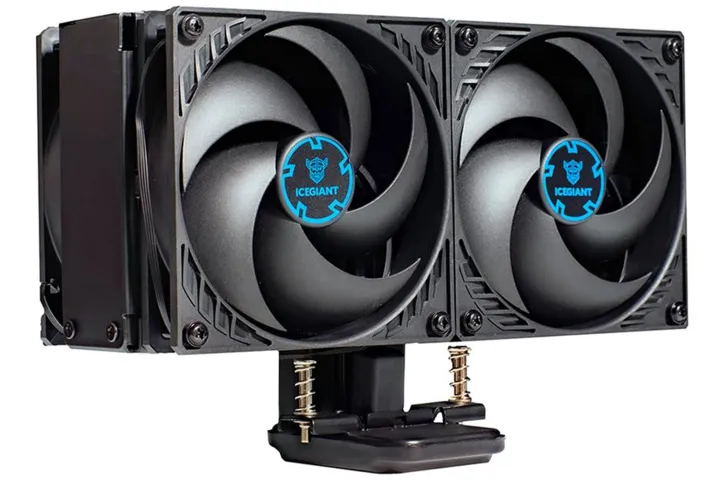
Hailed by many tech influencers as the all-in-one watercooling killer, the Ice Giant ProSiphon Elite launched in 2021 to huge fanfare. Unfortunately, it didn’t quite live up to those expectations, and sees stiff competition from smaller coolers like the iconic Noctua NH-D15. It uses gravity-driven heat pipes, so it only works in one of a few configurations, making mounting a little bit more tricky. Its sheer size doesn’t help there either, although in fanless mode, it is impressively thin, at just 2 inches.
Still, when one of your other dimensions is the largest among any CPU coolers, being a bit trim in another doesn’t do much to make your profile more sleek.
The Ice Giant ProSiphon is still readily available, though at $170, it is very expensive.
Noctua NH-P1
The best modern passive cooler you can buy: 6.2 x 6.1 x 6-inches
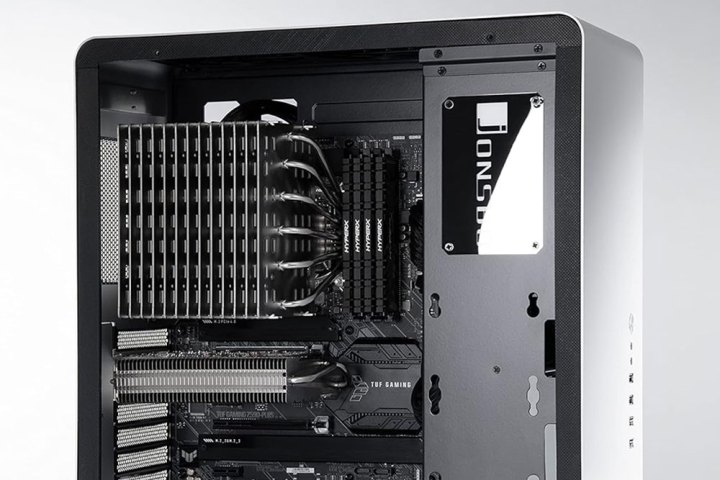
When the Noctua NH-P1 is the smallest cooler on a list, you know you’re walking among giants. Despite not quite taking up as much space as the other entries on this list, the Noctua NH-P1 is still an absolutely massive cooler. Designed for passive operation on the latest generations of AMD AM4 and AM5 CPUs, as well as Intel’s LGA 1700 chips (and a number of older generations), the Noctua NH-P1 is arguably the best passive CPU cooler available today.
Designed to handle CPUs up to 100W entirely passively, or even more with a quiet fan attached, the Noctua NH-P1 is a powerful CPU cooler and is arguably the one to recommend on this list if you want a simply enormous cooler. It’s not much to look at, but then, are any of Noctua’s designs? I don’t mind the brown myself, but it’s not a crowd-pleaser.
You can buy this cooler from a range of retailers, for around $110.
More interested in raw performance over sheer size and passive cooling ability? Check out our list of the best CPU coolers in 2024.
Editors' Recommendations
- What is CPU cache, and why is it so important for gaming?
- It just became the perfect time to buy a last-gen Intel CPU
- The best budget CPU coolers you can buy for under $50
- What is CPU usage, and how to fix high CPU usage
- The best CPU coolers to buy for every budget




